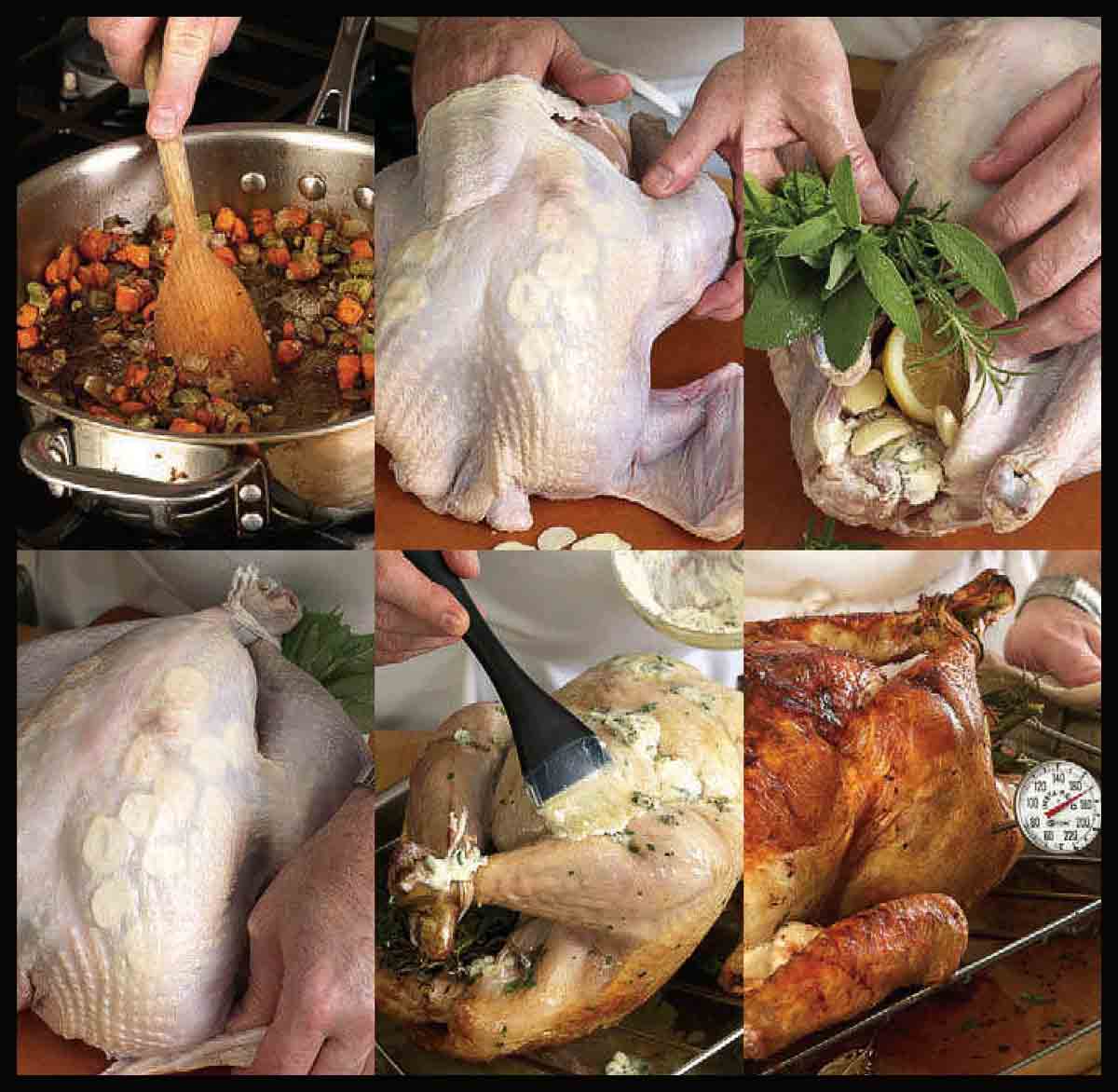
Butter-and-Herb-Roasted Turkey with Madeira Jus
Serves 10 to 12, with a good probability of leftovers
FOR THE BROTH
3 Tbs. extra-virgin olive oil
Neck from a 13- to 14-lb. turkey (below), cut into 3 or 4 pieces
Giblets from a 13- to 14-lb. turkey (below), chopped (optional)
Sea salt
4 medium cloves garlic, chopped
2 medium carrots, chopped
2 large celery stalks, chopped
1 large yellow onion, chopped
1 dried bay leaf
3 to 4 sprigs fresh flat-leaf parsley
2 to 3 fresh sage leaves
1 small sprig fresh rosemary
2 to 3 cups lower-salt chicken broth
1 cup Madeira
FOR THE TURKEY
1 13- to 14-lb. turkey (preferably fresh; not kosher or self-basting)
½ medium lemon
Sea salt
1 medium head garlic, separated into cloves and peeled
4 oz. (½ cup) unsalted butter, softened
1 Tbs. finely chopped fresh thyme
Freshly ground black pepper
4 sprigs fresh sage (7 to 8 inches long)
4 sprigs fresh rosemary (6 to 7 inches long)
1/3 cup celery leaves (optional)
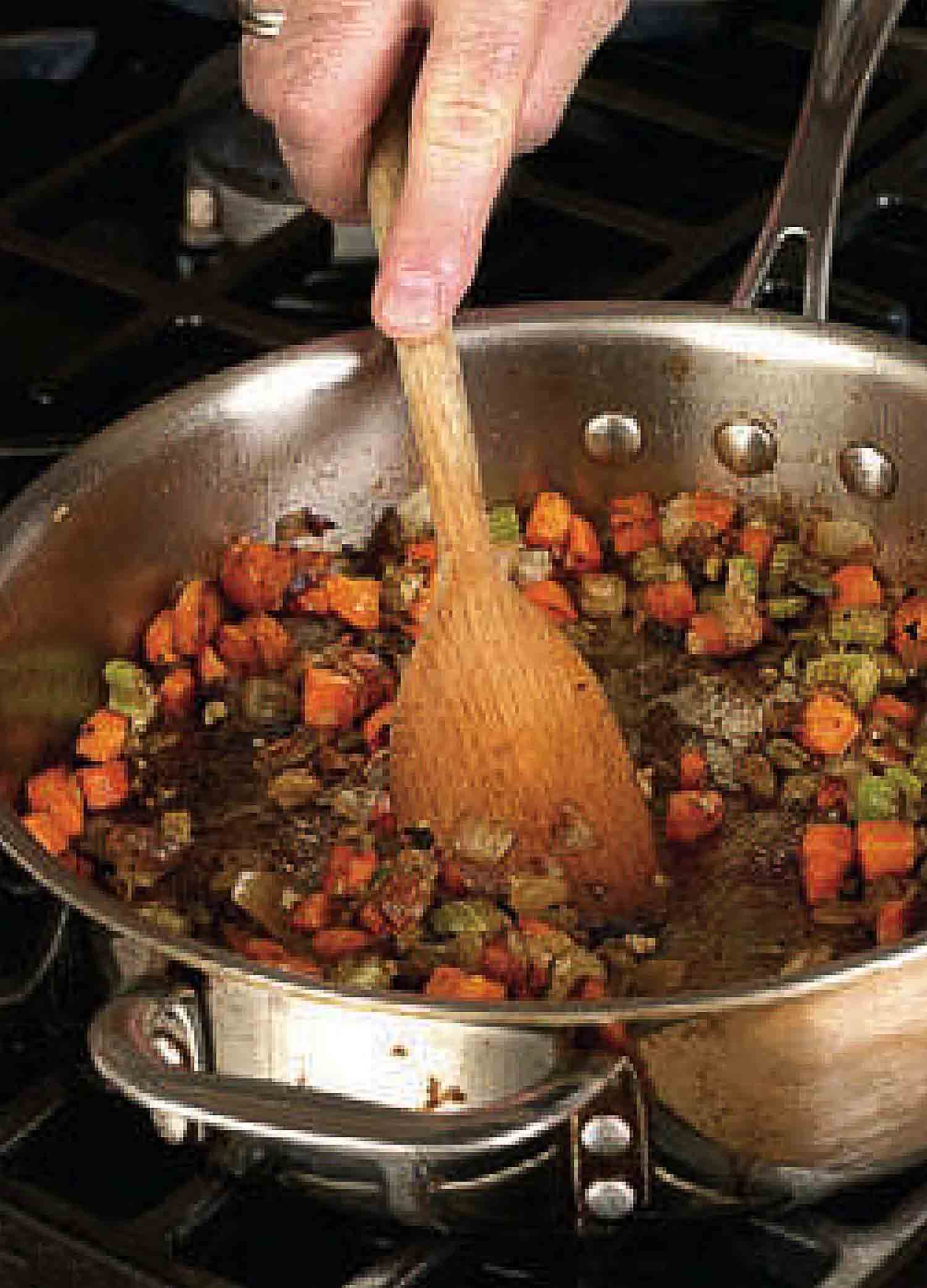
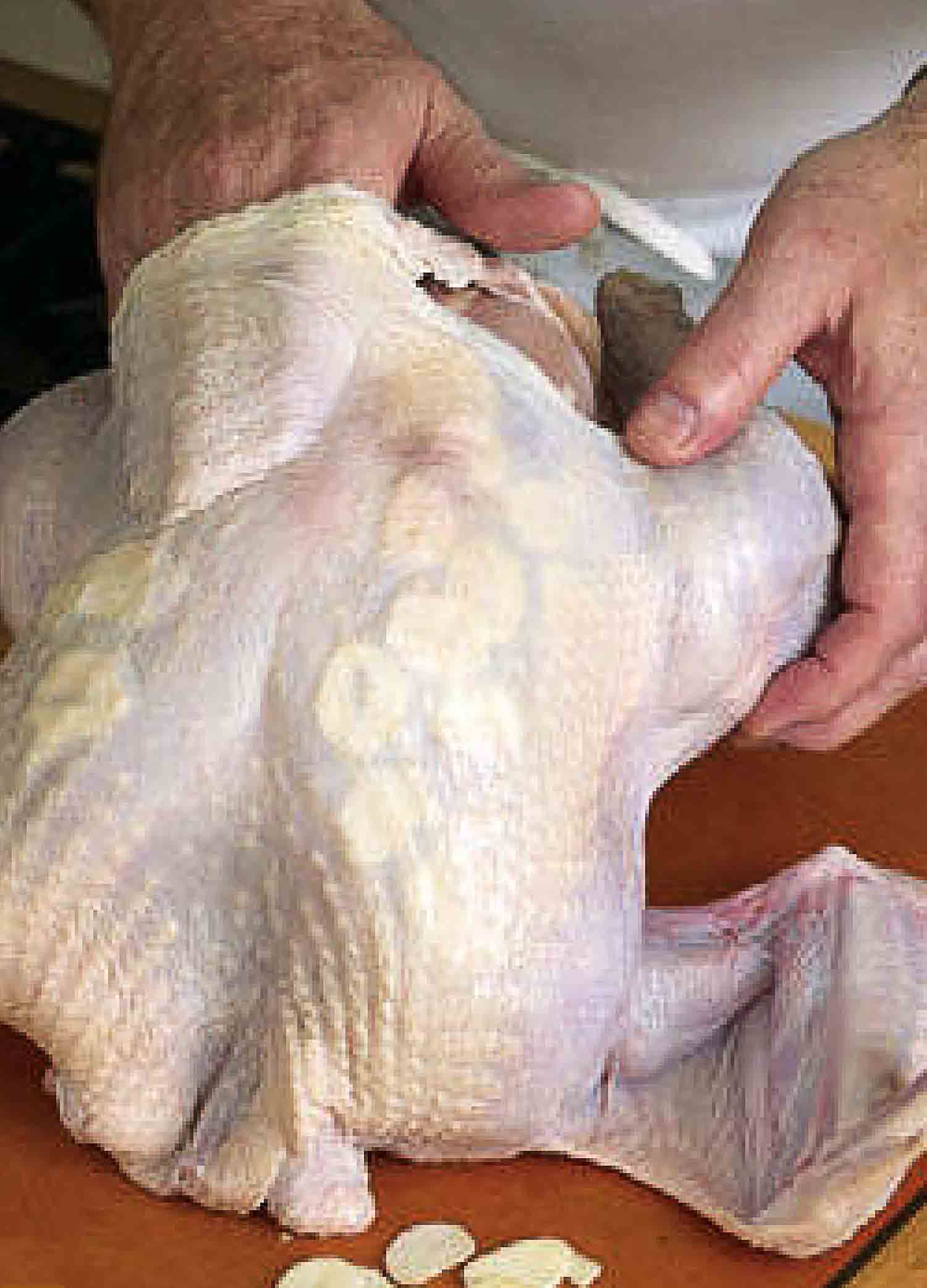
MAKE THE BROTH
Heat 2 Tbs. of the oil in a 10-inch straight-sided skillet over medium-high heat. Cook the neck and giblets (if using) with a pinch of salt, stirring often, until browned, 9 to 10 minutes.
Transfer the neck and giblets to a bowl. Heat the remaining 1 Tbs. oil and add the garlic, carrots, celery, onion, bay leaf, and a big pinch of salt. Cook, stirring often, until browned, 8 to 9 minutes.
Return the neck and giblets to the skillet. Add the parsley, sage, and rosemary. Add 1½ cups of water, 2 cups of the broth, and the Madeira. Bring to a boil; then reduce the heat and simmer, partially covered, until intensely flavorful, about 2½ hours. If the liquid level drops enough to expose the solids, add more broth. Strain the broth through a fine sieve into a large bowl-you’ll have 2 to 2½ cups.
ROAST THE TURKEY
Position a rack in the bottom of the oven and heat the oven to 325°F. Put a V-rack in a large roasting pan.
Rinse and dry the turkey. Rub the inside of the body and neck cavities with the cut side of the lemon half, and sprinkle 1 tsp. salt inside the cavities.
Thinly slice three garlic cloves. Carefully slide your hands under the skin of the turkey to loosen it from the breast. Push the garlic slices between the skin and the breast, being careful not to tear the skin.
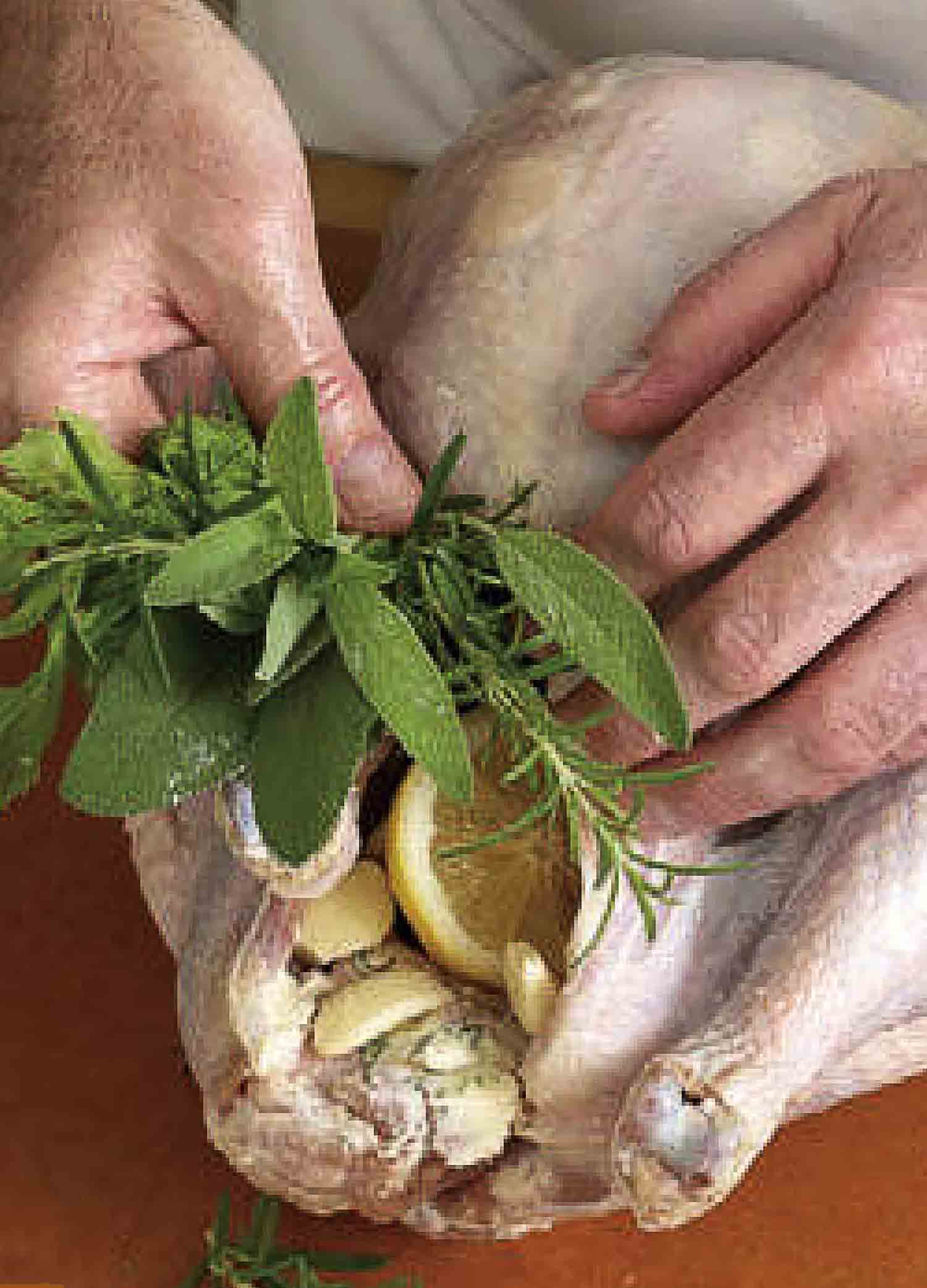
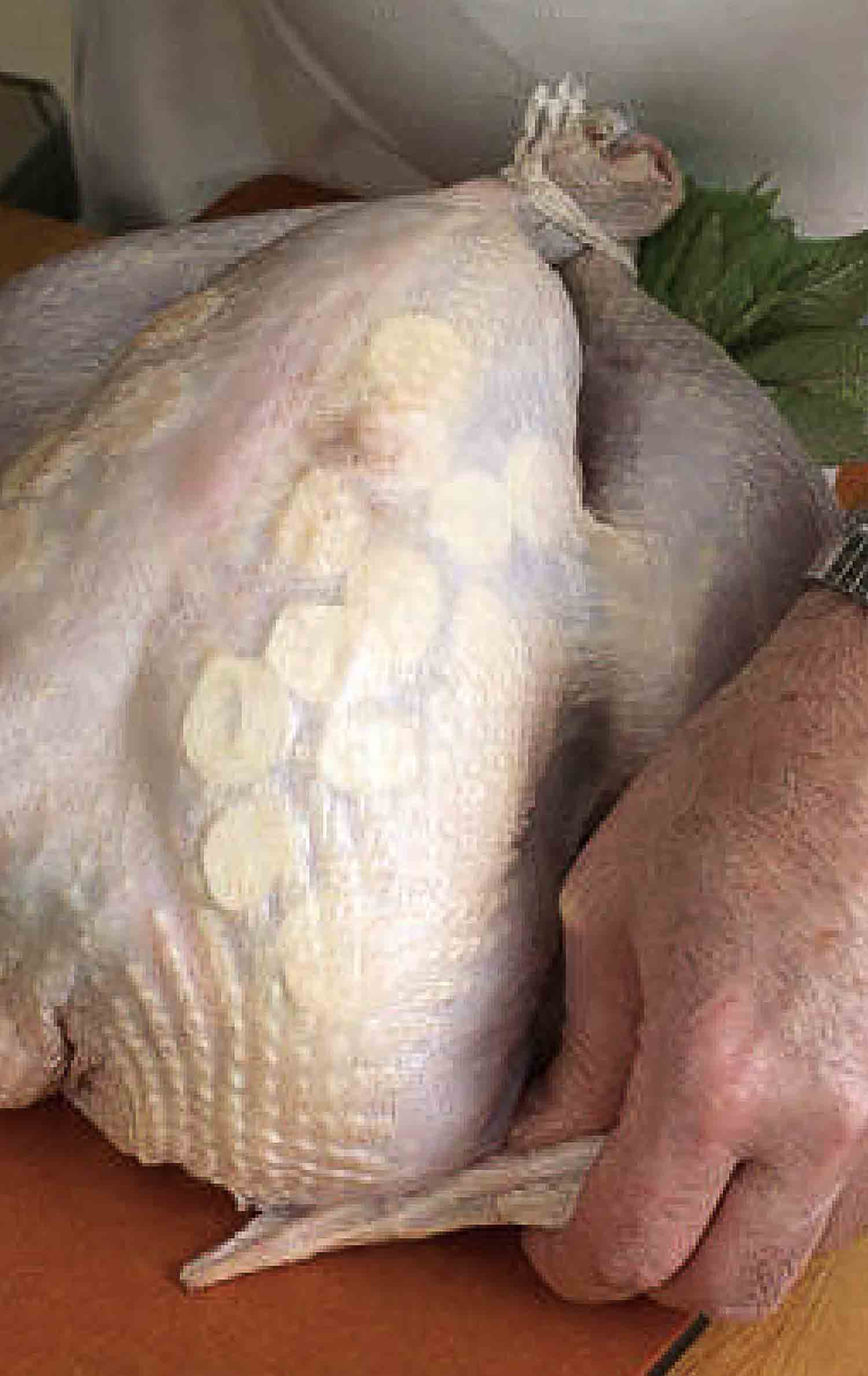
Mix the butter with the thyme, 2 tsp. salt, and a few grinds of pepper in a small bowl. Spread half of the butter inside the body cavity of the turkey. Put the lemon half, 3 sage sprigs, 3 rosemary sprigs, the celery leaves (if using), and about three-quarters of the remaining garlic cloves in the cavity Put the remaining herb sprigs and garlic cloves in the neck cavity.
Tie the legs together for a neater appearance, if you like. Tuck the wing tips behind the neck, securing any loose skin over the neck cavity beneath the wing tips. Set the turkey in the V-rack, breast side down. Rub half of the remaining thyme butter over the back of the turkey and sprinkle with salt. Roast for 1 hour.
Remove the pan from the oven and baste the turkey with the pan drippings. With silicone oven mitts or two wads of paper towels, flip the turkey onto its back. Spread the remaining thyme butter over the breast and legs, sprinkle with salt, and roast for 1 hour more.
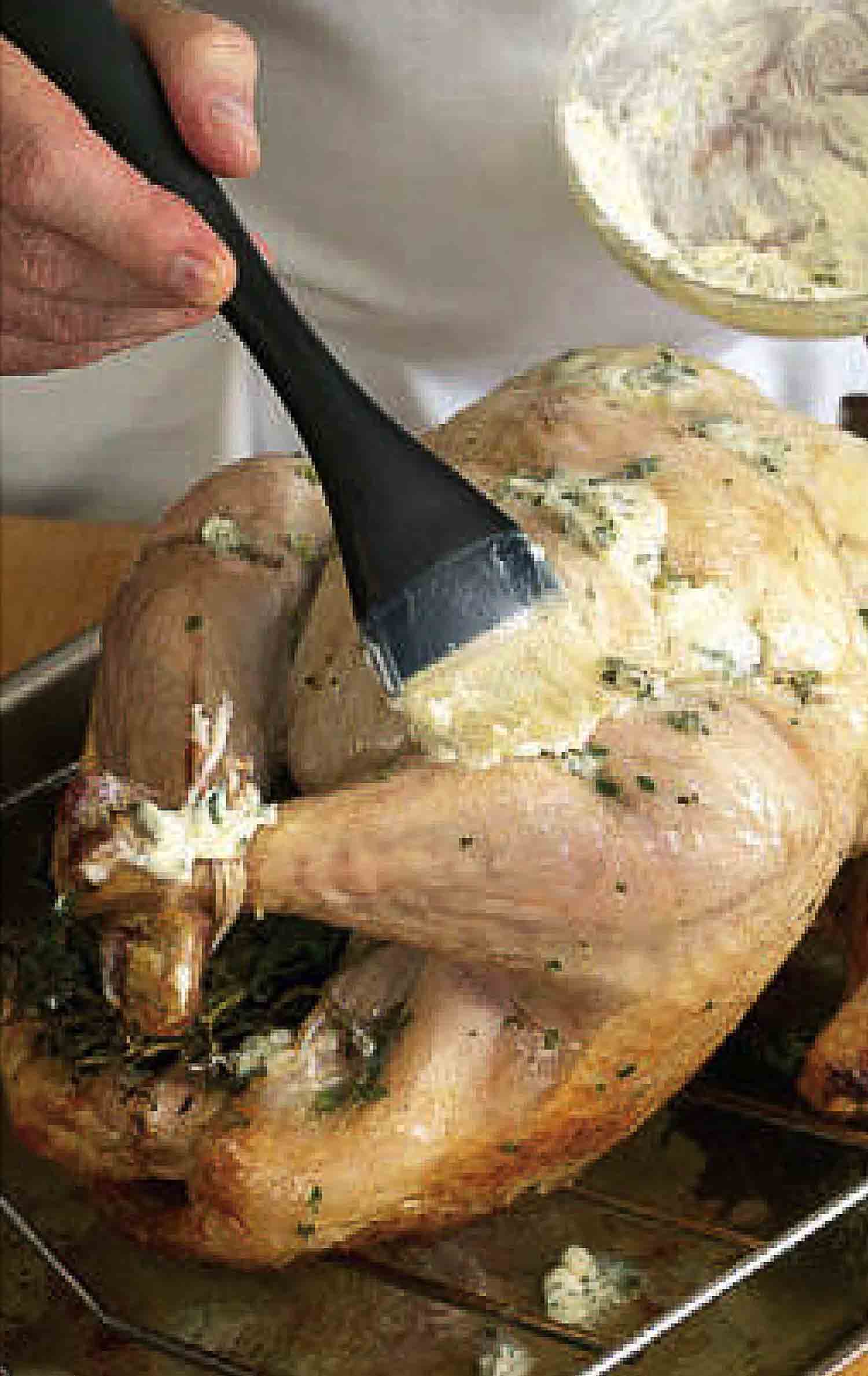
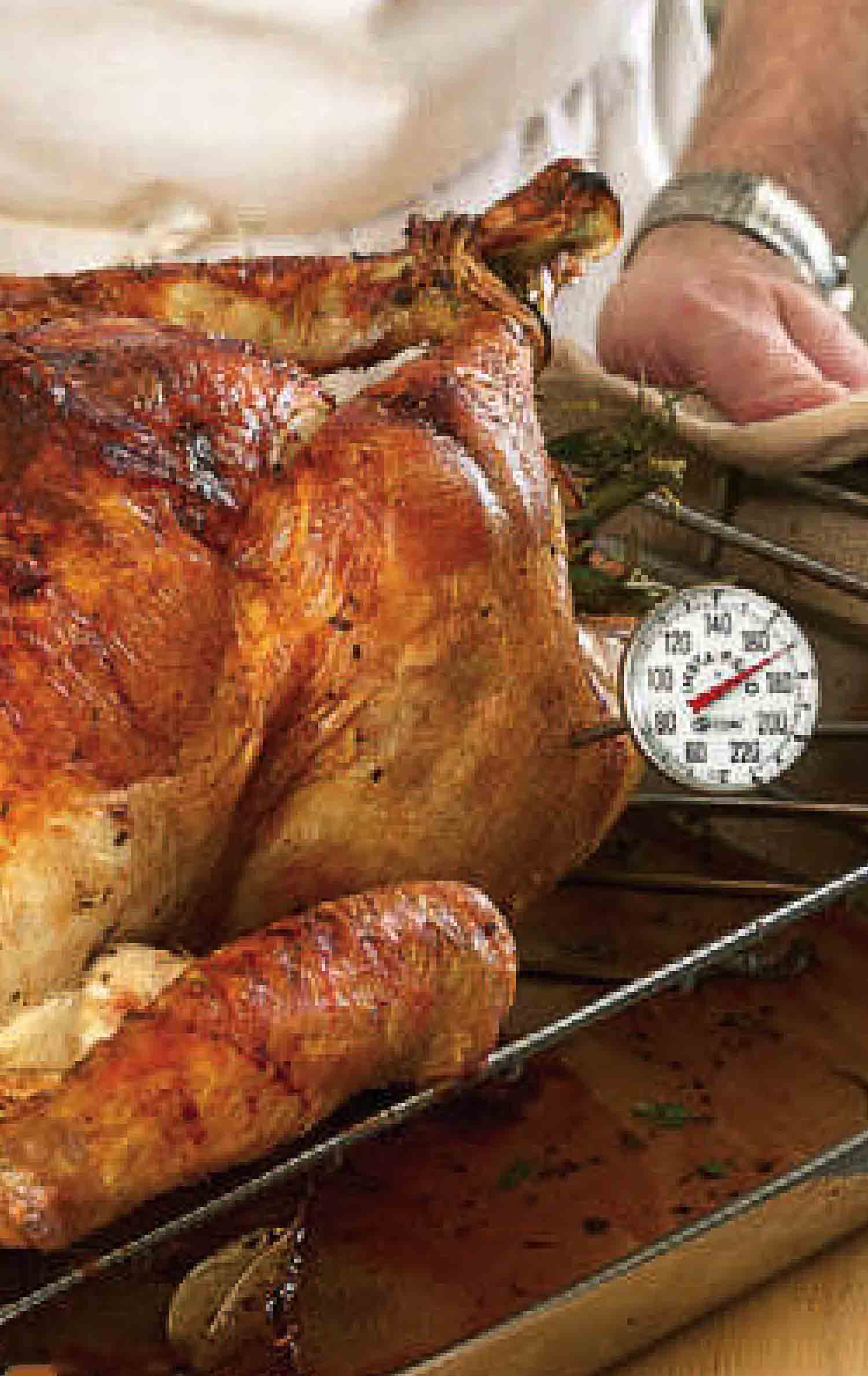
Baste and continue to roast for 30 minutes more. Baste again and then check the temperature with an instant-read thermometer in the thickest part of both thighs. The turkey is done when the thermometer registers 170°F to 175°F and the juices run clear when the thermometer is removed. If necessary, continue roasting and checking the temperature every 10 minutes. If at any time the turkey gets too dark on top, tent it loosely with foil.
Remove the pan from the oven. With silicone oven mitts or wads of paper towels, tilt the turkey so the juices in the cavity run into the roasting pan. Transfer the turkey to a serving platter or cutting board and tent it loosely with foil. Reserve the drippings in the roasting pan. Let the turkey rest for at least 30 minutes and up to 1 hour before carving.
MAKE THE JUS
Strain the drippings from the roasting pan through a fine sieve into the Madeira broth. Transfer to a fat separator, wait until the fat has risen to the top, and then slowly separate the broth from the fat into a clean 2-quart saucepan. Discard the fat.
Bring the sauce to a simmer over medium heat and season to taste with salt and pepper. If the jus is too concentrated and salty, add a little water.
Carve the turkey and serve with the jus.
It is a quote. Fine Cooking Magazine October / November 2011




